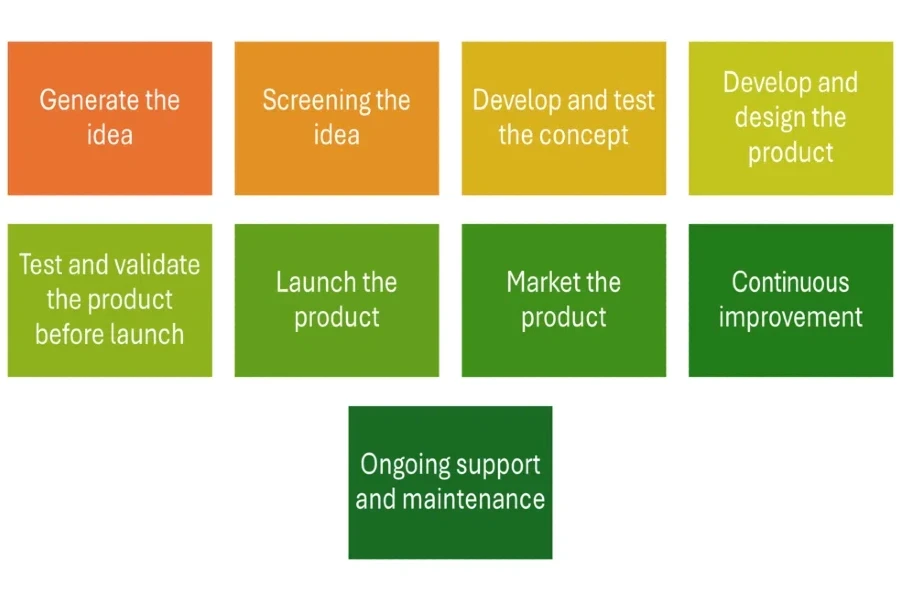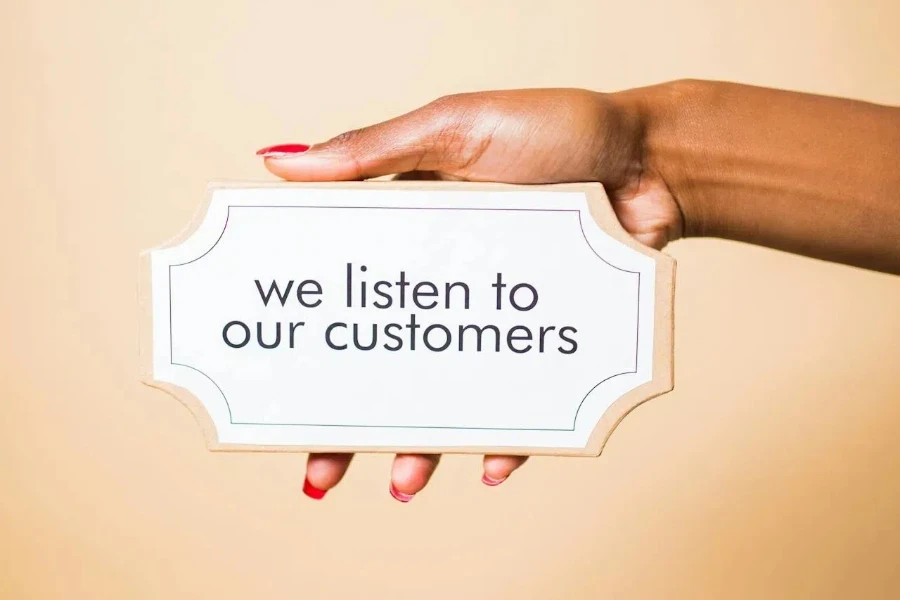Small businesses significantly contribute to global economic growth. However, statistics show that about 20% of new brands fail within 2 years, 45% within 5 years, and 65% within 10 years.
Research findings show that this failure results from a number of factors. For example, 42% of these unsuccessful companies lack a market for their products or services. On the other hand, 17% fail due to low-quality products, 17% do not have a business model, and 14% use the wrong marketing methods.
Product development life cycle (PDLC) can help prevent this high business failure rate. The concept allows business owners to plan their brands from idea generation to market rollout and after-sales support. They can use their understanding of the PDLC procedure to improve business performance, ensure their products fit the market, and achieve long-term success.
This blog will walk you through each stage of the PDLC and teach you how to turn ideas into successful products.
Table of Contents
What is the product development life cycle?
Steps of the product development life cycle
Final takeaway
What is the product development life cycle?

The PDLC refers to a number of stages a product goes through, from planning to after release to the market. It is a tool used for decision-making. PDLC involves planning, design, testing, and marketing. The goal is to deliver a product that meets customer needs and business objectives.
In an interview, Steve Jobs said that most business owners suffer from “the disease of thinking that a great idea is 90% of the work.” He explains that an idea grows and evolves, and may never come out as initially planned. This shows that PDLC is not a straightforward process.
A well-executed PDLC ensures proper resource allocation and reduces risks. This increases the likelihood of a successful market introduction.
Steps of the product development life cycle

Generate the idea
The first step in the PDLC is generating an idea based on market needs, technological advancements, or innovative concepts. Businesses can gather ideas through brainstorming sessions, customer feedback, competitor analysis, and industry trends. The key is to identify a problem that needs solving and conceptualize a product that offers a viable solution.
Screening the idea
Once an idea is generated, it must be evaluated for feasibility, market potential, and alignment with business goals. This involves conducting preliminary market research to determine demand, production costs, and profitability.
Not every idea will move forward. Therefore, this screening process helps filter out impractical or unprofitable concepts before investing significant resources.
Develop and test the concept
After an idea is approved, businesses must develop a concept and test it with potential customers. This may include creating sketches, prototypes, or digital mockups to visualize the product. Concept testing involves gathering feedback from target users to adjust features and functionality before moving into production.
Develop and design the product

At this stage, the product undergoes detailed design and development. Engineers, designers, and product managers work together to create functional prototypes. They also establish the final product specifications.
This phase also includes sourcing materials and defining production processes. The team ensures the product meets quality standards and regulatory requirements.
Test and validate the product before launch
It is important to conduct rigorous testing before introducing a product to the market. This step helps uncover and fix any potential issues. Businesses can conduct beta testing, quality assurance, and focus groups to help refine the product.
The testing helps ensure the products perform as expected. Besides, this stage also includes obtaining necessary certifications and regulatory approvals. It is important to note that these depend on the industry.
Launch the product

The product is ready for release on the market once testing is complete. A successful launch requires careful planning, including supply chain management and inventory preparation. Businesses must also ensure coordination between marketing, sales, and distribution teams.
Some businesses conduct a soft launch in select markets. This helps gather initial feedback before a full-scale release.
Market the product
Now that the product is in the market, it is time to ensure that it reaches the target potential customers.
Proper marketing is crucial for new products. This stage involves creating marketing strategies to reach their target audience. This can be through digital marketing, social media, traditional advertising, and public relations.
Marketing helps drive sales and create brand awareness. Businesses use marketing strategies to educate customers about the product and its benefits. Proper positioning leads to adoption.
Use customer feedback, marketing, and sales data for continuous improvement

Product development does not stop at launch.
Businesses should analyze customer feedback, sales data, and marketing trends to identify areas for improvement. The information gained can help update product features, address customer concerns, or adjust marketing strategies. Businesses that use these practices can meet consumer needs and preferences better.
Ignoring customers is the main cause of failure for about 14% of new businesses. Therefore, companies that actively listen to their customers and adapt based on real-world feedback are more likely to succeed. They also build stronger brand loyalty and maintain a competitive edge.
Ongoing support and maintenance
To ensure long-term success, businesses must provide ongoing support and maintenance for their products. This includes customer service, software updates (if applicable), and addressing any issues that arise post-launch.
Some products go through various iterations throughout their life cycles. These can include releasing updates or creating new product versions to improve performance or address a bug. Some brands add new features based on customer feedback and evolving needs.
Besides, providing after-sales support enhances customer satisfaction and builds brand loyalty. It also encourages repeat purchases and positive word-of-mouth referrals.
Final takeaway
The product development life cycle is a continuous process that requires strategic planning, thorough testing, and adaptive marketing. Following each stage carefully and using customer insights can ensure ongoing improvements. Besides, businesses can maximize the success of their products in competitive markets.
PDLC is applicable to businesses, whether launching a brand-new product or refining an existing one. Therefore, understanding and effectively managing the PDLC can set the business for long-term growth and innovation.




